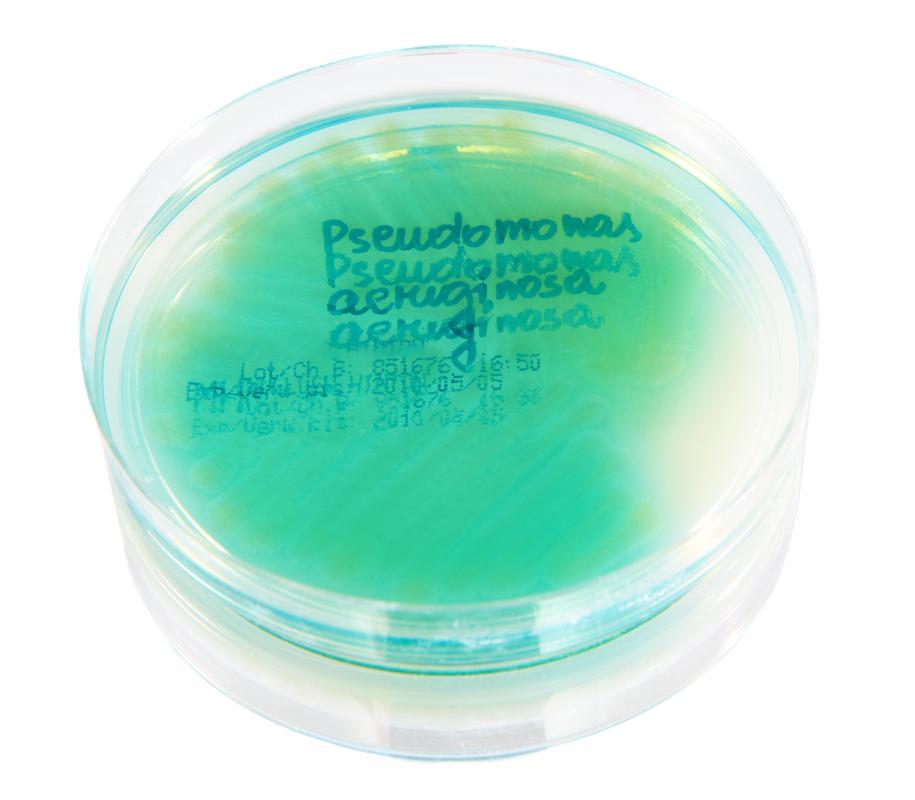At WiseGEEK, we're committed to delivering accurate, trustworthy information. Our expert-authored content is rigorously fact-checked and sourced from credible authorities. Discover how we uphold the highest standards in providing you with reliable knowledge.
What Is Involved in Pseudomonas Treatment?
The Pseudomonas genus of bacteria contains several species that can cause infections in humans, but most often, it is Pseudomonas aeruginosa that is the culprit. Different parts of the body can be affected, from the lungs to the skin, and so Pseudomonas treatment options differ. As the medical condition is caused by bacteria, antibiotics are central to any Pseudomonas treatment. A doctor can give the drugs to a patient in a variety of ways including injections, tablets and aerosols.
Pseudomonas bacteria are very common in the environment, and they live in dirt and water. Other sources of the bacteria include plants and animals. Although the bugs are not very dangerous for healthy people, they can cause infections such as urinary tract infections. When a person's immune system is compromised, the potential for disease can be worse. People who have cystic fibrosis, which makes the lining of the lungs less able to clear this type of infection, are one group which are susceptible to serious infections. Other severe and potentially lethal conditions the bacterium can cause include meningitis and blood poisoning.

Antibiotics are a group of chemicals that can kill bacteria. Different antibiotics work on specific groups of bacteria, which means that Pseudomonas treatment, for example, requires particular drugs if it is to clear the infection. Types of antibiotic that often are successful as a Pseudomonas treatment are cephalosporins, aminoglycosides and carbapenems. Colistin is another that can cure the infection, but for patients who have severe infections, drugs like piperacillin or ticarcillin are used.

Often when a doctor treats a Pseudomonas infection, he or she gives the patient more than one antibiotic at a time. This is to ensure that the bacteria that may be resistant to one drug are killed by the other. In cases like ear infections, the patient may also receive steroids. Surgical excision of infected tissue may also be required. Infections of burned tissue may mean that the patient needs to have the affected tissue debrided, in which case the tissue is scraped off.

Tablets that contain the drug may be sufficient for people who have mild cases like urinary tract infections. Those with eye infections may receive an ointment that they have to apply to the eye, or injections may be required. Dangerous infections like pneumonia, meningitis or an infection of the heart called endocarditis necessitate a course of injections of up to six weeks in duration. People with cystic fibrosis that have an infection can receive antibiotic in the form of an inhaler, so the drug delivers straight to the lungs.
AS FEATURED ON:
AS FEATURED ON:














Discuss this Article
Post your comments